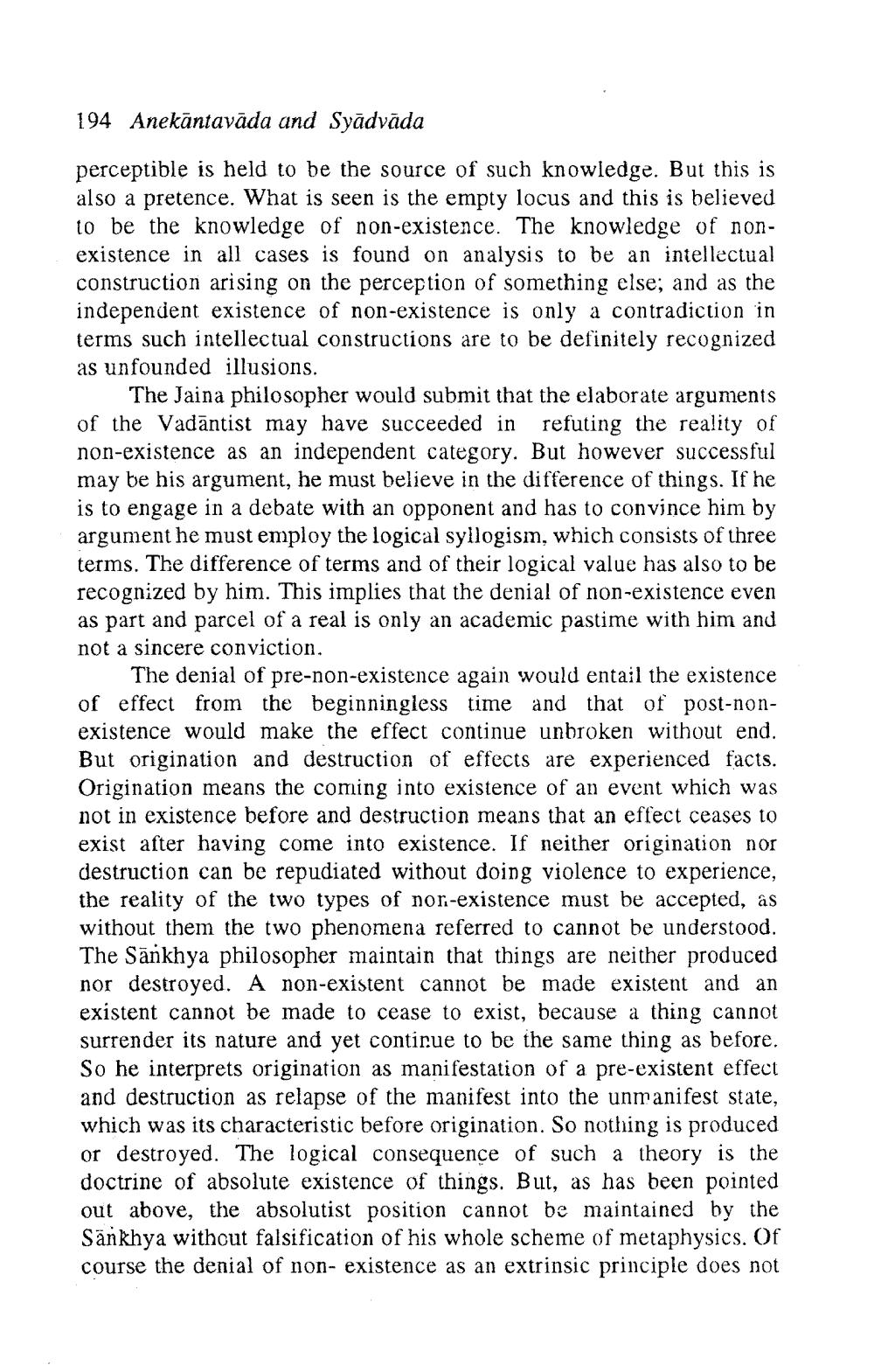________________
194 Anekāntavāda and Syádvāda
perceptible is held to be the source of such knowledge. But this is also a pretence. What is seen is the empty locus and this is believed to be the knowledge of non-existence. The knowledge of nonexistence in all cases is found on analysis to be an intellectual construction arising on the perception of something else; and as the independent existence of non-existence is only a contradiction in terms such intellectual constructions are to be definitely recognized as unfounded illusions.
The Jaina philosopher would submit that the elaborate arguments of the Vadāntist may have succeeded in refuting the reality of non-existence as an independent category. But however successful may be his argument, he must believe in the difference of things. If he is to engage in a debate with an opponent and has to convince him by argument he must employ the logical syllogism, which consists of three terms. The difference of terms and of their logical value has also to be recognized by him. This implies that the denial of non-existence even as part and parcel of a real is only an academic pastime with him and not a sincere conviction.
The denial of pre-non-existence again would entail the existence of effect from the beginningless time and that of post-nonexistence would make the effect continue unbroken without end. But origination and destruction of effects are experienced facts. Origination means the coming into existence of an event which was not in existence before and destruction means that an effect ceases to exist after having come into existence. If neither origination nor destruction can be repudiated without doing violence to experience, the reality of the two types of non-existence must be accepted, as without them the two phenomena referred to cannot be understood. The Sānkhya philosopher maintain that things are neither produced nor destroyed. A non-existent cannot be made existent and an existent cannot be made to cease to exist, because a thing cannot surrender its nature and yet contirue to be the same thing as before. So he interprets origination as manifestation of a pre-existent effect and destruction as relapse of the manifest into the unmanifest state, which was its characteristic before origination. So nothing is produced or destroyed. The logical consequence of such a theory is the doctrine of absolute existence of things. But, as has been pointed out above, the absolutist position cannot be maintained by the Sankhya without falsification of his whole scheme of metaphysics. Of course the denial of non-existence as an extrinsic principle does not




